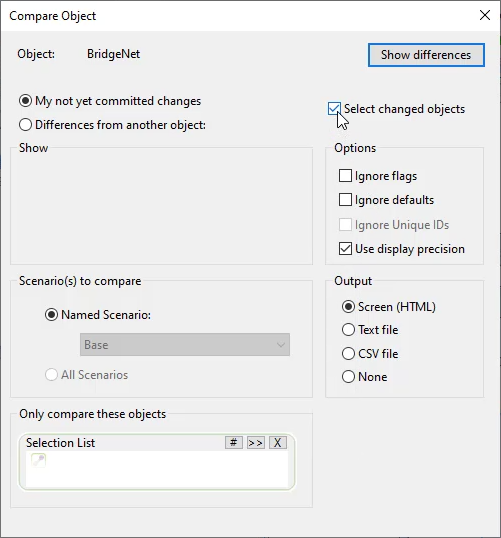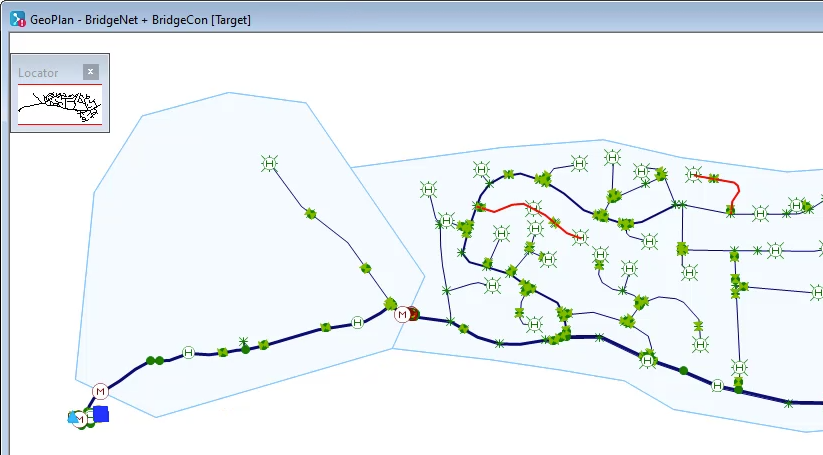Step-by-step Guide
The Open Data Import Centre contains many ways to control data imports. For example, it can be used to update the diameter or material of pipes in a network without adding or removing them. Users often have to work with files that have new pipes, or pipes that have changed ID.
To import a shapefile that contains pipe data from a GIS system:
- From the Model Group window, under BridgeTown, drag the BridgeNet network and drop it into the workspace.
- Select Network > Import > Open Data Import Centre (Network).

- To indicate the type of data you are importing, in the open Data Import Centre dialog box, in the Table To Import Data Into group box, expand the drop-down and select Pipe.
- In the Data Source group box, expand the Source Type: drop-down and pick Raw Shape File.
- Next to the File box, click the Browse (…) button to open a file browser.

- Navigate to the Data folder.
- Open the Pipes folder.
- Select pipe.shp.
- Click Open.

- In the Flag Behaviour group box, expand the drop-down next to Otherwise, set flag on imported fields to: and pick #I. (The “I” stands for “imported”)
- Enable Only flag genuine changes to data values.
- In the Updating and Delete Options group box, make sure Overwrite is enabled, which means we will overwrite any existing values in our model, if they exist in the imported file.
- Select Update based on asset ID.
- Select Only update existing objects.

IMPORTANT: Notice that when you check Update based on Asset ID, the Asset ID row in the Field Mapping Configuration turns red. This indicates that this field is the key, which will be used to match records in the import file.
- Click the Auto-Map button.
The diameter and material rows in the Field Mapping Configuration are now assigned import fields, because the field names in the import file match WS Pro. However, the ID field in the import file is named something different.
- In the Asset ID row, under Import Fields, expand the drop-down and select UID from the import file.
- Click Import.

The notification reports that many pipes were updated, meaning that this number of pipes matched the import file, not that this number of values were changed. You will verify this information below.
- Click OK.
- Close the Open Data Import Centre dialog box.
Now that the data has been imported, compare the changes:
- In the Model Group window, right-click the BridgeNet network, and select Compare.

- In the Compare Object dialog box, enable Select changed objects.

- Click Show differences to open a list of changes.

- Switch to the GeoPlan to see the pipes that were updated highlighted in red.

- Commit the changes you made to the network.










